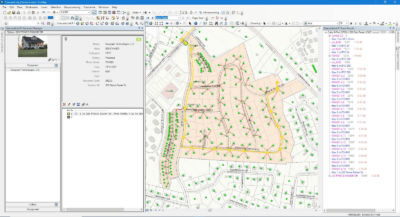Planning a new network is always challenging and complex. There is a lot of work that goes into it. Yet having a solid plan is not always enough. In network planning, flexibility is vital. As a network planner, you need your network to address current needs while being flexible to meet future demands. Plus, you want to save on costs throughout the lifetime of the project. While there is no way to predict the future, there are ways to plan your network for future growth. What do we mean by that?
Let’s look at an example. Suppose you are tasked with generating a network plan to pass 100 homes. The selected geographic area is adjacent to a large wooded lot. You go through the necessary steps and have a solid “to-build” plan. Soon, the brand new FTTH network is built, and customers are happy with their fast internet. Someday, a developer turns the adjacent wooded lot into a multi-story apartment building. Since your plan was not designed to accommodate that nor to be prepared for that possibility, all the money you spent to serve those 100 homes is now undervalued. Plus, you incur additional costs to overbuild.
With these types of situations in mind, you can take small steps to future-proof your network that will make a big impact. For that, you need to understand how your plan might affect each portion of your network. Then you can build with enough flexibility to accommodate future growth. When you design and plan, it is important to take into account the three areas of distribution:
- Trunk & feeder network – global distribution network to connect hubs and nodes
- Mainline distribution – mid-range distribution network to connect hubs to the curb
- Customer premise – customer-specific network connections from the curb to the home
Any plan should incorporate the possibility of future growth and changes in each of these levels. Then you’ll be set up to accommodate any revisions or modifications that come your way.
You can’t future-proof entirely. And that’s ok. By taking those three levels of distribution into account, your plan will be flexible enough to make necessary changes and iterations. So you can create a scalable, future-proof network and avoid rip-and-replace scenarios. This will ensure ROI and cost effectiveness. And that’s smart.
Take the first step towards designing more future-proof networks that will power communities across the country by




